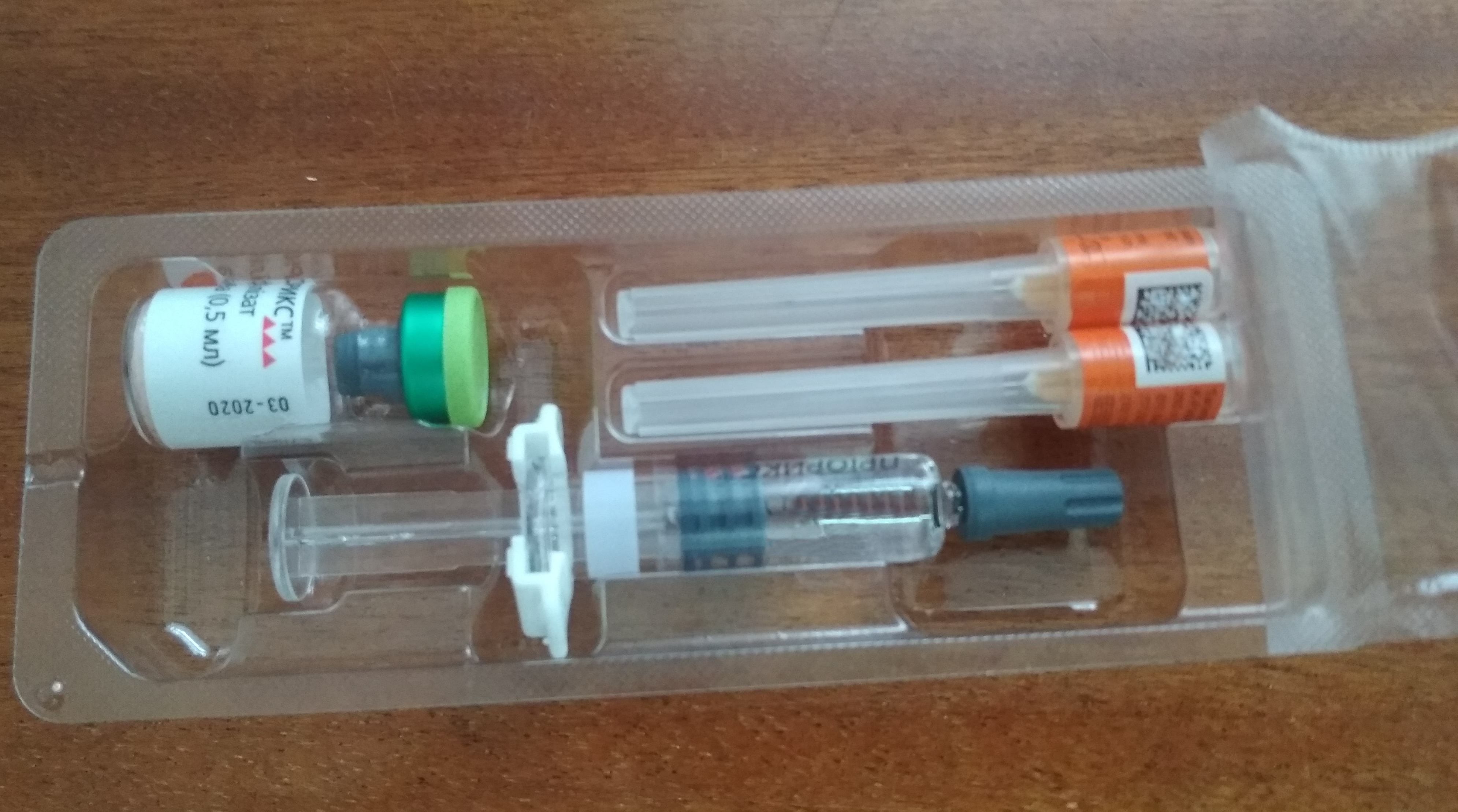|
Epidemiology Of Autism
The epidemiology of autism is the study of the incidence and distribution of autism spectrum disorders (ASD). A 2022 systematic review of global prevalence of autism spectrum disorders found a median prevalence of 1% in children in studies published from 2012 to 2021, with a trend of increasing prevalence over time. However, the study’s 1% figure may reflect an underestimate of prevalence in low- and middle-income countries. ASD averages a 4.3:1 male-to-female ratio in diagnosis, not accounting for ASD in gender diverse populations, which overlap disproportionately with ASD populations. The number of children known to have autism has increased dramatically since the 1980s, at least partly due to changes in diagnostic practice; it is unclear whether prevalence has actually increased; and as-yet-unidentified environmental risk factors cannot be ruled out. In 2020, the Centers for Disease Control's Autism and Developmental Disabilities Monitoring (ADDM) Network reported that approx ... [...More Info...] [...Related Items...] OR: [Wikipedia] [Google] [Baidu] |
Autism Spectrum Disorders
The autism spectrum, often referred to as just autism or in the context of a professional diagnosis autism spectrum disorder (ASD) or autism spectrum condition (ASC), is a neurodevelopmental disorder, neurodevelopmental condition (or conditions) characterized by difficulties in Social relation, social interaction, verbal and nonverbal communication, and the presence of repetitive behavior and restricted interests. Other common signs include unusual responses to Multisensory integration, sensory stimuli. Autism is generally understood as a ''spectrum disorder'', which means that it can manifest differently in each person: any given autistic individual is likely to show some, but not all, of the characteristics associated with it, and the person may exhibit them to varying degrees. Some autistic people remain nonverbal autism, nonspeaking over the course of their lifespan, while others have relatively unimpaired spoken language. There is large variation in the level of support peop ... [...More Info...] [...Related Items...] OR: [Wikipedia] [Google] [Baidu] |
Heritability Of Autism
The heritability of autism is the proportion of differences in expression of autism that can be explained by genetic variation; if the heritability of a condition is high, then the condition is considered to be primarily genetic. Autism has a strong genetic basis, although the genetics of autism are complex and it is unclear whether autism spectrum disorder (ASD) is explained more by multigene interactions or by rare mutations with major effects. Early studies of twins estimated the heritability of autism to be more than 90%; in other words, that 90% of the differences between autistic and non-autistic individuals are due to genetic effects. This however may be an overestimate: new twin data and models with structural genetic variation are needed. When only one identical twin is autistic, the other often has learning or social disabilities. For adult siblings, the likelihood of having one or more features of the broader autism phenotype might be as high as 30%, much higher than t ... [...More Info...] [...Related Items...] OR: [Wikipedia] [Google] [Baidu] |
DSM-5
The ''Diagnostic and Statistical Manual of Mental Disorders, Fifth Edition'' (DSM-5), is the 2013 update to the ''Diagnostic and Statistical Manual of Mental Disorders'', the taxonomic and diagnostic tool published by the American Psychiatric Association (APA). In the United States, the DSM serves as the principal authority for psychiatric diagnoses. Treatment recommendations, as well as payment by health care providers, are often determined by DSM classifications, so the appearance of a new version has practical importance. The DSM-5 is the only DSM to use an Arabic numeral instead of a Roman numeral in its title, as well as the only living document version of a DSM. The DSM-5 is not a major revision of the DSM-IV-TR but there are significant differences. Changes in the DSM-5 include the reconceptualization of Asperger syndrome from a distinct disorder to an autism spectrum disorder; the elimination of subtypes of schizophrenia; the deletion of the "bereavement exclusion" for ... [...More Info...] [...Related Items...] OR: [Wikipedia] [Google] [Baidu] |
Childhood Disintegrative Disorder
Childhood disintegrative disorder (CDD), also known as Heller's syndrome and disintegrative psychosis, is a rare condition characterized by late onset of developmental delays—or severe and sudden reversals—in language, social function, and motor skills. Researchers have not been successful in finding a cause for the disorder. CDD has some similarity to autism and is sometimes considered a low-functioning form of it. In May 2013, CDD, along with other sub-types of PDD (Asperger's syndrome, autism, and PDD-NOS), was fused into a single diagnostic term called "autism spectrum disorder" under the new DSM-5 manual. CDD was originally described by Austrian educator Theodor Heller (1869–1938) in 1908, 35 years before Leo Kanner and Hans Asperger described autism. Heller had previously used the name ''dementia infantilis'' for the syndrome. An apparent period of fairly normal development is often noted before a regression in skills or a series of regressions in skills. The age at ... [...More Info...] [...Related Items...] OR: [Wikipedia] [Google] [Baidu] |
Asperger's Syndrome
Asperger syndrome (AS), also known as Asperger's, is a former neurodevelopmental disorder characterized by significant difficulties in social interaction and nonverbal communication, along with restricted and repetitive patterns of behaviour and interests. The syndrome is no longer recognised as a diagnosis in itself, having been merged with other disorders into autism spectrum disorder (ASD). It was considered to differ from other diagnoses that were merged into ASD by relatively unimpaired spoken language and intelligence. The syndrome was named after the Austrian pediatrician Hans Asperger, who, in 1944, described children in his care who struggled to form friendships, did not understand others' gestures or feelings, engaged in one-sided conversations about their favourite interests, and were clumsy. In 1994, the diagnosis of Asperger's was included in the fourth edition (DSM-IV) of the American '' Diagnostic and Statistical Manual of Mental Disorders''; with the pub ... [...More Info...] [...Related Items...] OR: [Wikipedia] [Google] [Baidu] |
PDD-NOS
A pervasive developmental disorder not otherwise specified (Including atypical autism) (PDD-NOS) is one of four disorders which were collapsed into the diagnosis of autism spectrum disorder in the DSM-5 and also was one of the five disorders classified as a pervasive developmental disorder (PDD) in the DSM-IV. According to the DSM-4, PDD-NOS is a diagnosis that is used for "severe or pervasive impairment in the development of reciprocal social interaction and/or verbal and nonverbal communication skills, or when stereotyped behavior, interests, and/or activities are present, but the criteria are not met for a specific PDD" or for several other disorders. PDD-NOS includes atypical autism, because the criteria for autistic disorder are not met, for instance because of late age of onset, atypical symptomatology, or subthreshold symptomatology, or all of these. Even though PDD-NOS is considered milder than typical autism, this is not always true. While some characteristics may be mi ... [...More Info...] [...Related Items...] OR: [Wikipedia] [Google] [Baidu] |
Diagnostic And Statistical Manual
The ''Diagnostic and Statistical Manual of Mental Disorders'' (DSM; latest edition: DSM-5-TR, published in March 2022) is a publication by the American Psychiatric Association (APA) for the classification of mental disorders using a common language and standard criteria and is the main book for the diagnosis and treatment of mental disorders in the United States and is considered one of the "Bibles" of psychiatry along with the ICD, CCMD and the Psychodynamic Diagnostic Manual. It is usedmainly in the United Statesby researchers, psychiatric drug regulation agencies, health insurance companies, pharmaceutical companies, the legal system, and policymakers. Mental health professionals use the manual to determine and help communicate a patient's diagnosis after an evaluation. Hospitals, clinics, and insurance companies in the United States may require a DSM diagnosis for all patients with mental disorders. Health-care researchers use the DSM to categorize patients for research pur ... [...More Info...] [...Related Items...] OR: [Wikipedia] [Google] [Baidu] |
MMR Vaccine
The MMR vaccine is a vaccine against measles, mumps, and rubella (German measles), abbreviated as ''MMR''. The first dose is generally given to children around 9 months to 15 months of age, with a second dose at 15 months to 6 years of age, with at least four weeks between the doses. After two doses, 97% of people are protected against measles, 88% against mumps, and at least 97% against rubella. The vaccine is also recommended for those who do not have evidence of immunity, those with well-controlled HIV/AIDS, and within 72 hours of exposure to measles among those who are incompletely immunized. It is given by injection. The MMR vaccine is widely used around the world. Worldwide over 500 million doses were administered between 1999 and 2004, and 575 million doses have been administered since the vaccine's introduction worldwide. Measles resulted in 2.6 million deaths per year before immunization became common. This has decreased to 122,000 deaths per year , mostly in low-in ... [...More Info...] [...Related Items...] OR: [Wikipedia] [Google] [Baidu] |
Andrew Wakefield
Andrew Jeremy Wakefield (born September 3, 1956) is a British anti-vaccine activist, former physician, and discredited academic who was struck off the medical register for his involvement in ''The Lancet'' MMR autism fraud, a 1998 study that falsely claimed a link between the measles, mumps, and rubella (MMR) vaccine and autism. He has subsequently become known for anti-vaccination activism. Publicity around the 1998 study caused a sharp decline in vaccination uptake, leading to a number of outbreaks of measles around the world. He was a surgeon on the liver transplant programme at the Royal Free Hospital in London and became senior lecturer and honorary consultant in experimental gastroenterology at the Royal Free and University College School of Medicine. He resigned from his positions there in 2001, "by mutual agreement", then moved to the United States. In 2004, Wakefield co-founded and began working at the Thoughtful House research center (now renamed Johnson Center for ... [...More Info...] [...Related Items...] OR: [Wikipedia] [Google] [Baidu] |
Evidence-based Medicine
Evidence-based medicine (EBM) is "the conscientious, explicit and judicious use of current best evidence in making decisions about the care of individual patients". The aim of EBM is to integrate the experience of the clinician, the values of the patient, and the best available scientific information to guide decision-making about clinical management. The term was originally used to describe an approach to teaching the practice of medicine and improving decisions by individual physicians about individual patients. Background, history and definition Medicine has a long history of scientific inquiry about the prevention, diagnosis, and treatment of human disease. The concept of a controlled clinical trial was first described in 1662 by Jan Baptist van Helmont in reference to the practice of bloodletting. Wrote Van Helmont: The first published report describing the conduct and results of a controlled clinical trial was by James Lind, a Scottish naval surgeon who conducted rese ... [...More Info...] [...Related Items...] OR: [Wikipedia] [Google] [Baidu] |
Vaccines And Autism
Extensive investigation into vaccines and autism has shown that there is no relationship between the two, causal or otherwise, and that the vaccine ingredients do not cause it. Vaccinologist Peter Hotez researched the growth of the false claim and concluded that its spread originated with Andrew Wakefield's fraudulent 1998 paper, with no prior paper supporting a link. Despite the scientific consensus for the absence of a relationship and the retracted paper, the anti-vaccination movement at large continue to promote myths, conspiracy theories, and misinformation linking the two. A developing tactic appears to be the "promotion of irrelevant research san active aggregation of several questionable or peripherally related research studies in an attempt to justify the science underlying a questionable claim." Claimed mechanisms The claimed mechanisms have changed over time, in response to evidence refuting each in turn. Vaccine-derived measles virus The idea of a link between ... [...More Info...] [...Related Items...] OR: [Wikipedia] [Google] [Baidu] |
Controversies In Autism
Diagnoses of autism have become more frequent since the 1980s, which has led to various controversies about both the cause of autism and the nature of the diagnoses themselves. Whether autism has mainly a genetic or developmental cause, and the degree of coincidence between autism and intellectual disability, are all matters of current scientific controversy as well as inquiry. There is also more sociopolitical debate as to whether autism should be considered a disability on its own. Epidemiology The current accepted prevalence of autism spectrum disorder (ASD) are around 1%, although previous research has shown far lower rates of incidence. ASD averages a 4.3:1 male-to-female ratio. The number of children on the autism spectrum has increased dramatically since the 1980s, at least partly due to changes in diagnostic practice; it is unclear whether prevalence has actually increased; and as-yet-unidentified environmental risk factors cannot be ruled out. The risk of autism is a ... [...More Info...] [...Related Items...] OR: [Wikipedia] [Google] [Baidu] |



